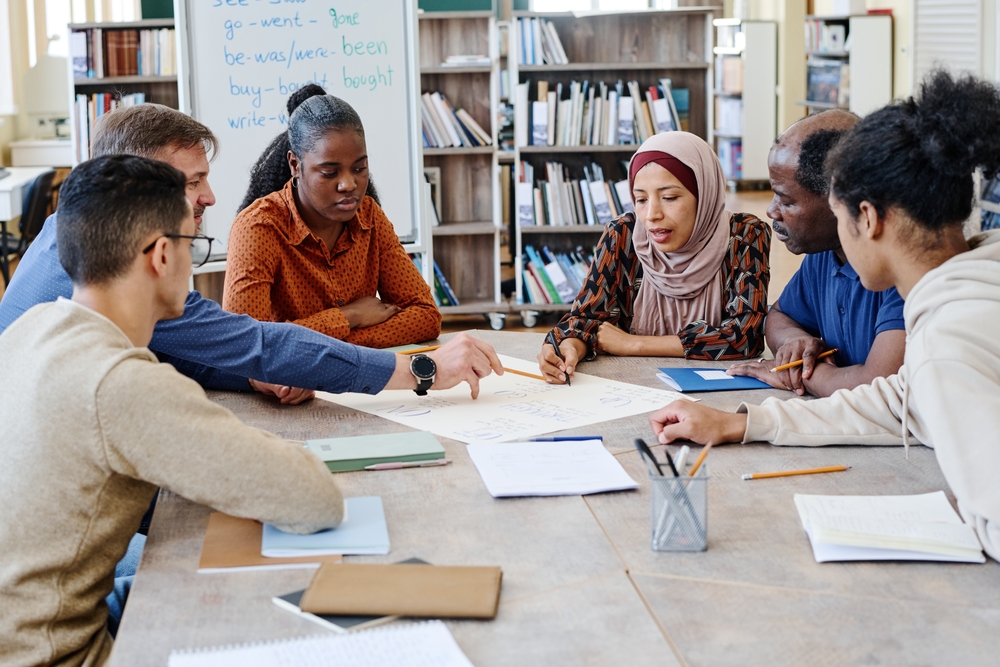Introduction
The search for a peaceful and productive learning environment in the dynamic field of education extends beyond the traditional classroom. It is an honorable endeavor that is vital to fostering not only academic excellence but also the deep development of people and society as a whole. When inclusivity and efficacy are given top priority in the classroom, it becomes a testing ground for knowledge as well as comprehension, empathy, and cohesion amongst its diverse student body. This blog sets out to explore the complexities of establishing a learning environment where diversity is truly celebrated, not just acknowledged. Our investigation goes beyond the quest of academic achievement and explores methods that allow every learner to not just coexist but thrive. By looking at different strategies, we hope to shed light on the way to a successful and inclusive educational experience, building the groundwork for a revolutionary learning process where each student has the chance to succeed.
- Accept Diversity in the Curriculum: Including diversity in the curriculum is a crucial first step in promoting inclusivity. Make sure that a wide range of viewpoints, cultures, and historical narratives are represented in the course materials and subjects. This enhances the learning process and gives students a sense of community by enabling them to recognize themselves in the course materials.

- Differentiated Education: Differentiated instruction should be used to acknowledge and meet the needs of the various learning styles and skill levels present in the classroom. Adapt teaching strategies to meet different needs by including kinesthetic, auditory, and visual components. This method makes sure that every student can understand the subject and interact with it in a way that best fits their unique learning style.
- Create an Inclusive Culture: Foster an environment in the classroom where students are respected and diversity is celebrated. Instructors are essential in setting an example of inclusive behavior. Stress the value of hearing and understanding diverse points of view and cultivate an atmosphere where each student feels heard and respected.
- Peer Collaboration and Learning: Encourage students to collaborate with one another by providing opportunities for collaborative learning. Peer-to-peer interaction gives students the chance to learn from one another while also fostering a sense of community. Students can improve their interpersonal skills and gain an appreciation for different points of view through cooperative projects and group activities.
- Professional Development for Teachers: It’s critical that teachers never stop learning. Programs for professional development that emphasize cultural competency, inclusivity, and efficient teaching techniques help to foster an environment in which every student can achieve. Give educators the resources and know-how they need to successfully meet a range of needs in the classroom.
- Practices of Inclusive Language: Words have a great deal of power in the classroom. Use language that is inclusive and recognizes the diversity of your student body. An inclusive and polite environment can be created by avoiding stereotypes, speaking in a gender-neutral manner, and addressing students by their preferred names and pronouns.
- Offer Sufficient Support Services: Recognize and offer the assistance that students with varying needs require. Counseling services, special education services, and language assistance for English language learners may fall under this category. Creating an inclusive learning environment requires first ensuring that students have access to the resources they need.
- Community and Parent Involvement: Include the community at large and parents in the educational process. Working together, parents, community members, and educators can help students feel that they have a shared responsibility for their success. Additionally, it gives students access to more support systems, highlighting the significance of a community coming together to foster a supportive learning environment.
- Use Technology Wisely: Make use of technology to promote inclusivity. Diverse learning styles can be accommodated by interactive platforms, online resources, and educational apps. But it’s imperative to guarantee that equitable access to technology is maintained, and that its integration enhances rather than detracts from the educational process as a whole.
- Frequent Evaluation and Input: Conduct frequent evaluations to determine the success of instructional strategies and inclusive initiatives. Ask students for feedback to learn about their experiences and pinpoint areas that need work. Continuous assessment makes it possible to improve tactics over time, keeping the learning environment adaptable to students’ changing needs.

Conclusion
It takes a comprehensive and deliberate approach to create a learning environment that is peaceful and productive for each and every student. It entails accepting diversity, creating an inclusive environment, and using a range of tactics that are tailored to the particular requirements of every learner. By putting these tactics into practice, teachers can help create a learning environment that is transformative—one in which students gain knowledge while also developing a sense of unity, respect, and understanding. Let us remain unwavering in our dedication to creating classroom environments where each student feels respected, included, and equipped to succeed as we work toward educational excellence.
